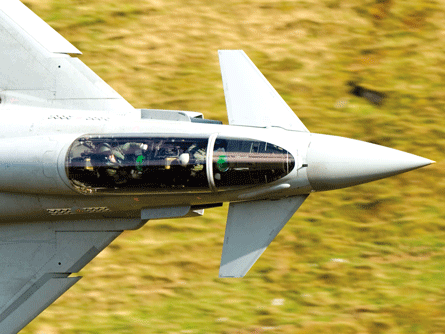National elections and a one-year planning pause will delay hard decisions on most US military aircraft programmes until 2009. That will leave industry and Pentagon planners to use the coming year to try to maintain the status quo as spending growth slows and President George Bush's administration enters its final months in power. Any hard decisions made during 2008 will be by accident, with all three major contract awards nearing a conclusion originally due in 2007.
The US Air Force plans to finalise delayed acquisitions of new combat search and rescue helicopters and tanker aircraft this year, but widespread uncertainty remains as to whether either decision can avoid a lengthy challenge in the courts or in US Congress: its CSAR-X contract award has already been overturned twice since opting for Boeing's HH-47 Chinook in 2006. Meanwhile, the US Navy plans to select the winner of a contract to build up to 50 Broad Area Maritime Surveillance unmanned air systems as early as February, although this award could also face legal challenges.
With so much uncertainty about new business, the defence industry's focus will be on protecting work already in hand. Boeing'sC-17 strategic transport and Lockheed Martin's F-22 production lines face shutdown in 2009 if new funds are not secured, although the air force and industry are committed to keeping both programmes alive until at least 2010. Congress generally supports efforts to keep existing production programmes and factory jobs continuing, but 2008 also coincides with a down year in two of the Department of Defense's key budgetary planning cycles.
The 2005 Quadrennial Defense Review is scheduled to be updated next year, which has the potential of undoing any major investment decisions made during 2008. The Pentagon's two-year budgeting process also means most major decisions on new investment programmes will be withheld until 2009.
Some of Washington's strongest allies will meanwhile be pushing hard to see tough decisions made on export policy prior to Bush's departure, although Congressional opposition could continue to frustrate many. Australia and the UK are awaiting approvals on defence trade co-operation treaties brokered during 2007, while Japan and South Korea are seeking access to sensitive stealth and unmanned technologies linked to the F-22 and Northrop Grumman's RQ-4 Global Hawk.
Which way will Japan jump?
Japan wants to advance its F-X fighter contest in late 2008, but if Washington maintains its stance of barring F-22 exports, a second option could be to push for the Lockheed F-35 Joint Strike Fighter and acquire more Boeing F-15s in the interim. But, if snubbed, Tokyo could instead look to rivals such as the Dassault Rafale and Eurofighter Typhoon, or even move ahead with its indigenous stealth fighter programme.

The Joint Strike Fighter programme had a decidedly mixed 2007, with early successes tempered by a seven-month period in which aircraft AA-1 failed to fly. Although the F-35 returned to flight last month, the programme faces a perhaps pivotal year, with its most technically challenging version - the short take-off and vertical landing F-35B - scheduled to fly in May, at the same time that Eurofighter partners Italy and the UK must balance their future investment decisions between the US aircraft and/or a third batch of Typhoons.
With many other major procurements in the pipeline, including for two new aircraft carriers, 14 strategic tanker aircraft and a new military flying training system, the UK Ministry of Defence must wield the spending axe, and the Eurofighter or F-35 projects could be victims.
Eurofighter closed deals with Austria and Saudi Arabia during 2007 for the programme's first 87 export aircraft. But with a Tranche 3 contract signature targeted for late this year, the consortium must work harder than ever if it is to see its launch nations honour their production commitments, or at least minimise the impact of their suggested order cuts. The UK Royal Air Force's possible first combat deployment of the type - potentially to Afghanistan - could deliver a much-needed demonstration of the Typhoon's multirole pedigree, while Eurofighter also tries to pursuade Denmark and Norway to turn their backs on the JSF.
Saab is also eyeing the Nordic states for further sales of its Gripen, with deliveries to the Czech Republic and Hungary now complete and South Africa to commence frontline operations this year. Stockholm recently won a surprise deal to deliver Gripens to Thailand, and the type's long-term sales prospects will be supported this year by the first flight of an enlarged-size demonstrator.
EADS will hope that its development woes with the Airbus Military A400M transport, Eurocopter Tiger and NH Industries NH90 helicopters have passed their worst, but a failure to fly the A400M around mid-year could lead to another financially damaging round of penalty charges, and maybe drive early customers such as France and the UK to seek interim means of providing much-needed tactical airlift.
India could this year seal its first major arms deal with the USA, with the nation's air force having shown interest in a $1 billion order for six Lockheed C-130J tactical transports. New Delhi's massive procurements will make it one of the industry's top targets during 2008, with bidders eyeing its 126-strong medium multirole combat aircraft competition and a revived project to supply 197 army light utility helicopters, following the collapse of a planned deal with Eurocopter. But given India's past slow pace of airframe selection and its new culture of transparency, bidders must be prepared for lengthy hand-wringing over offsets, cost and project deadlines.
Elsewhere in the Asia-Pacific region, Singapore's advanced jet trainer contest is likely to repeat the rivalry between Alenia Aermacchi, BAE Systems and Korea Aerospace Industries/Lockheed Martin already experienced in the United Arab Emirates. South Korea will look to advance its Korean Helicopter Programme and decide whether to pursue an attack variant, and Taiwan will hope that the Bush administration approves its request for more Lockheed F-16s as a parting gift.
Source: Flight International























